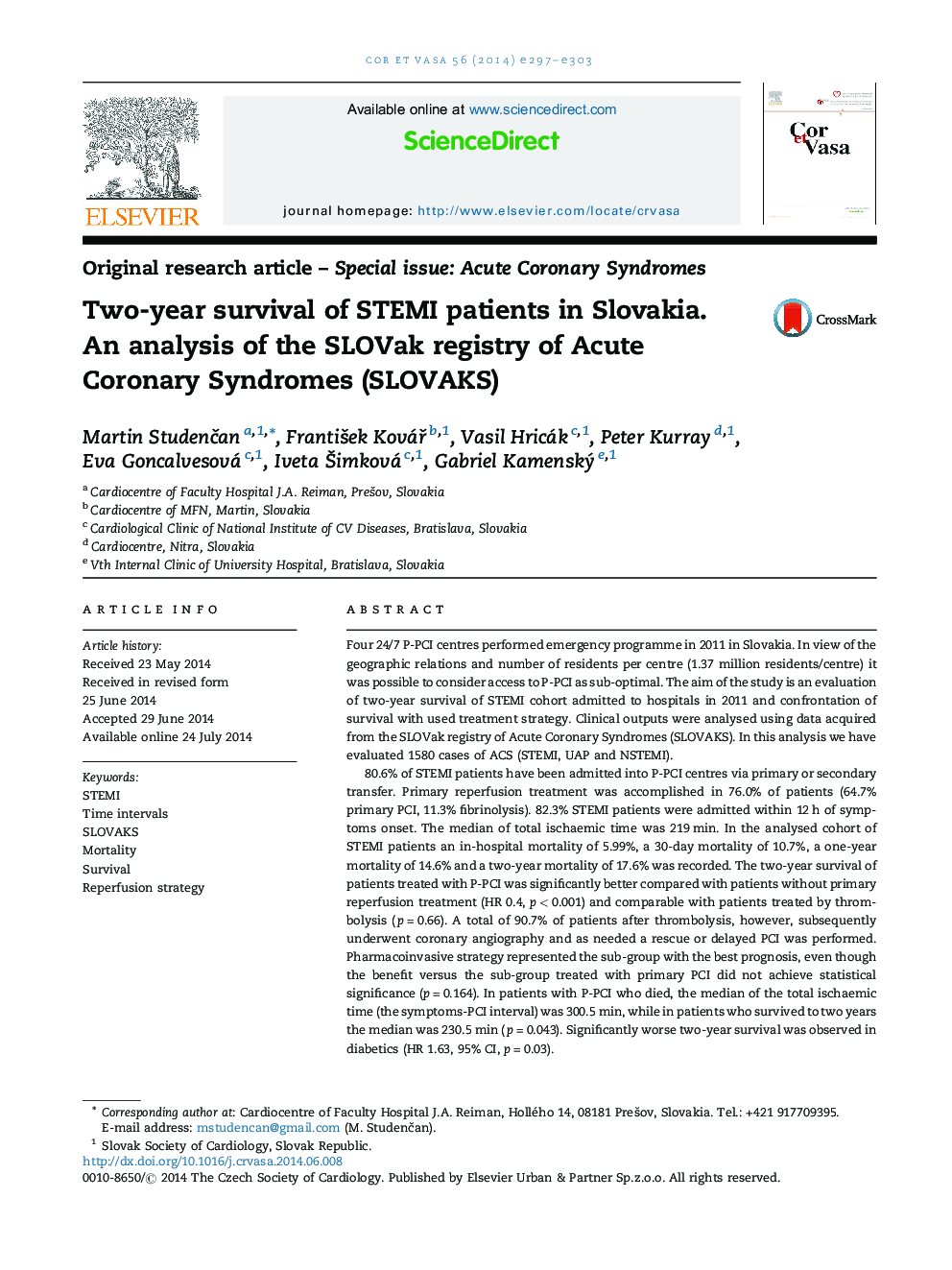| کد مقاله | کد نشریه | سال انتشار | مقاله انگلیسی | نسخه تمام متن |
|---|---|---|---|---|
| 2731544 | 1147367 | 2014 | 7 صفحه PDF | دانلود رایگان |

Four 24/7 P-PCI centres performed emergency programme in 2011 in Slovakia. In view of the geographic relations and number of residents per centre (1.37 million residents/centre) it was possible to consider access to P-PCI as sub-optimal. The aim of the study is an evaluation of two-year survival of STEMI cohort admitted to hospitals in 2011 and confrontation of survival with used treatment strategy. Clinical outputs were analysed using data acquired from the SLOVak registry of Acute Coronary Syndromes (SLOVAKS). In this analysis we have evaluated 1580 cases of ACS (STEMI, UAP and NSTEMI).80.6% of STEMI patients have been admitted into P-PCI centres via primary or secondary transfer. Primary reperfusion treatment was accomplished in 76.0% of patients (64.7% primary PCI, 11.3% fibrinolysis). 82.3% STEMI patients were admitted within 12 h of symptoms onset. The median of total ischaemic time was 219 min. In the analysed cohort of STEMI patients an in-hospital mortality of 5.99%, a 30-day mortality of 10.7%, a one-year mortality of 14.6% and a two-year mortality of 17.6% was recorded. The two-year survival of patients treated with P-PCI was significantly better compared with patients without primary reperfusion treatment (HR 0.4, p < 0.001) and comparable with patients treated by thrombolysis (p = 0.66). A total of 90.7% of patients after thrombolysis, however, subsequently underwent coronary angiography and as needed a rescue or delayed PCI was performed. Pharmacoinvasive strategy represented the sub-group with the best prognosis, even though the benefit versus the sub-group treated with primary PCI did not achieve statistical significance (p = 0.164). In patients with P-PCI who died, the median of the total ischaemic time (the symptoms-PCI interval) was 300.5 min, while in patients who survived to two years the median was 230.5 min (p = 0.043). Significantly worse two-year survival was observed in diabetics (HR 1.63, 95% CI, p = 0.03).ConclusionsIn 2011 it was possible to record a continuation of the favourable trend in the management of patients with STEMI in Slovakia. The greatest challenge for health care workers in the coming years will be to ensure primary reperfusion treatment for patients in the desired time intervals. Our analysis confirms the excellent prognosis of patients managed through a pharmacoinvasive strategy. The mid-term survival of patients after ACS in Slovakia points to worse results in comparison with results from abroad, which could be associated with an unfavourable length of total ischaemic time and less consistent secondary prevention could be speculated.
Journal: Cor et Vasa - Volume 56, Issue 4, August 2014, Pages e297–e303